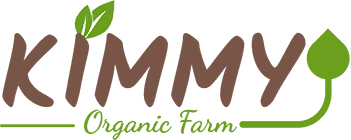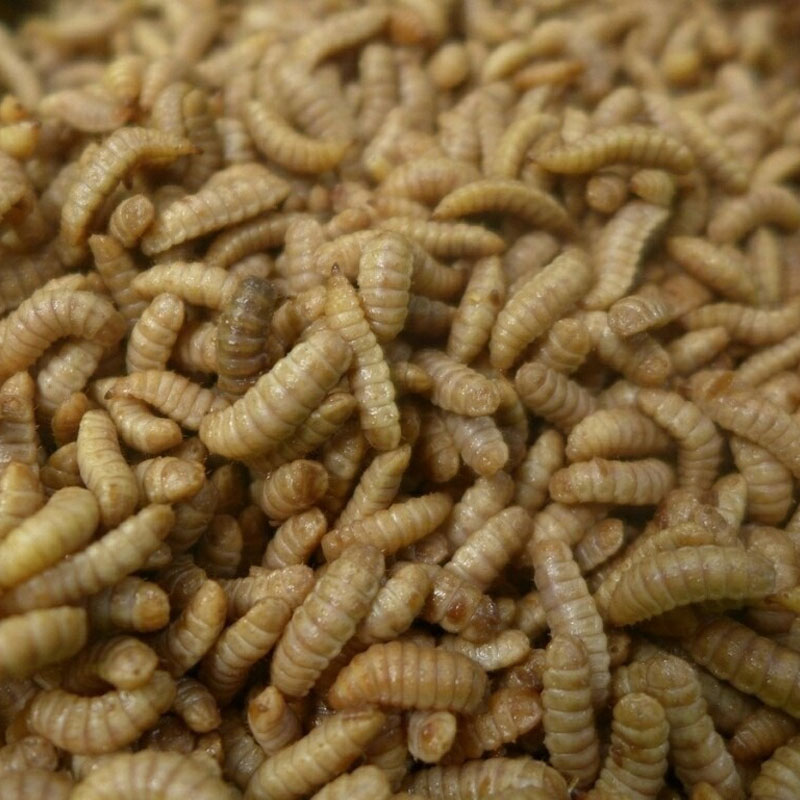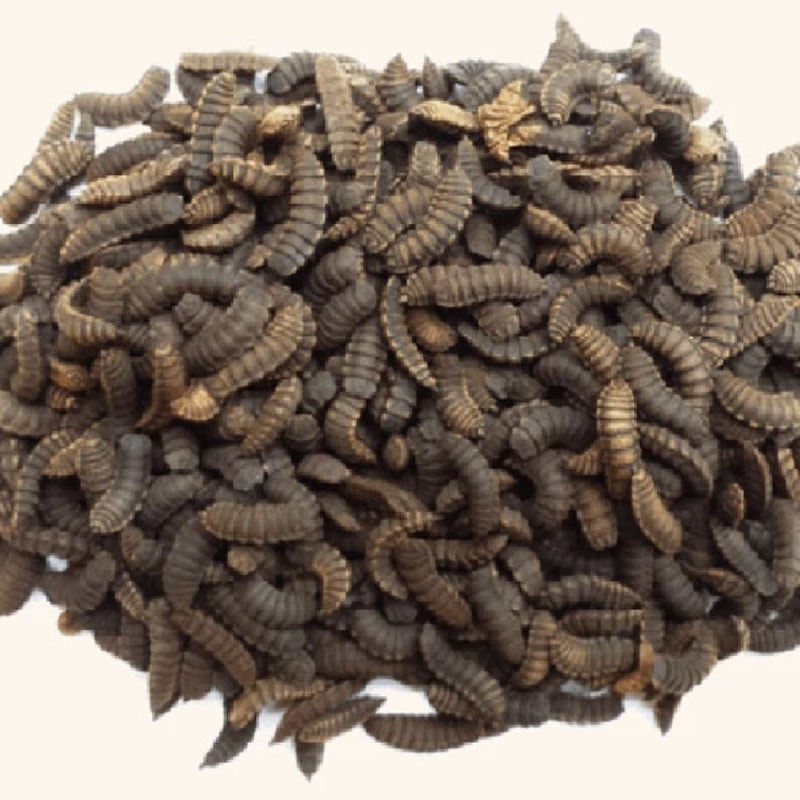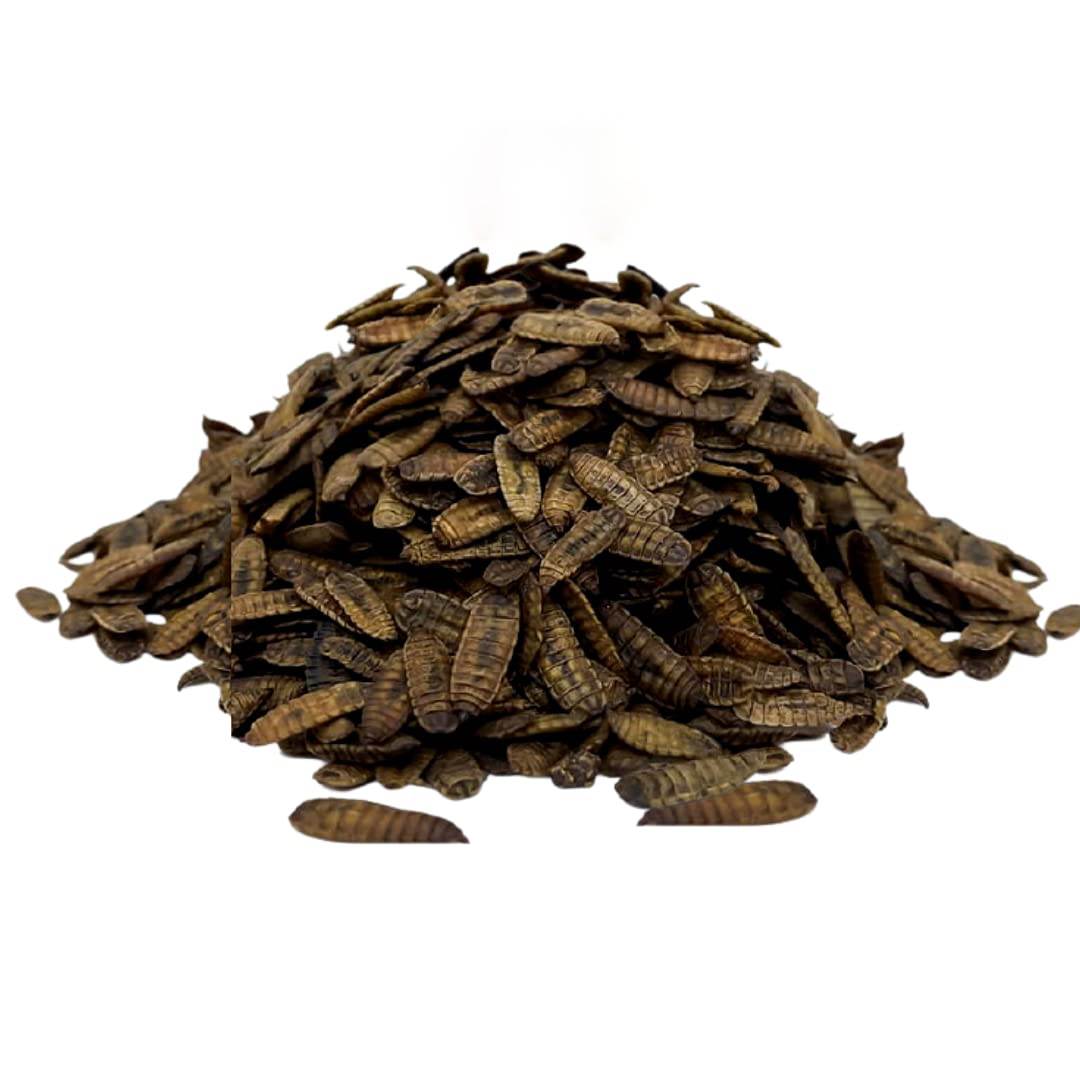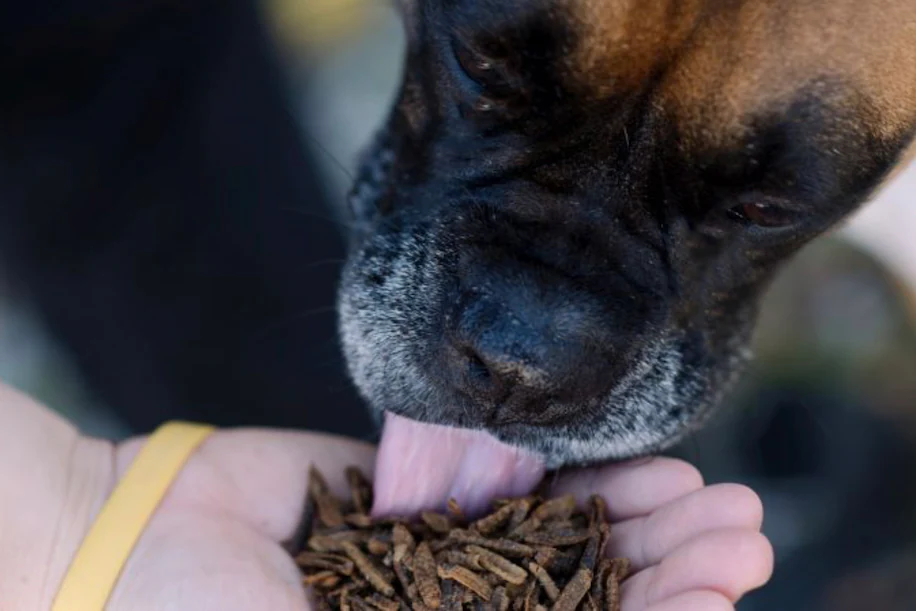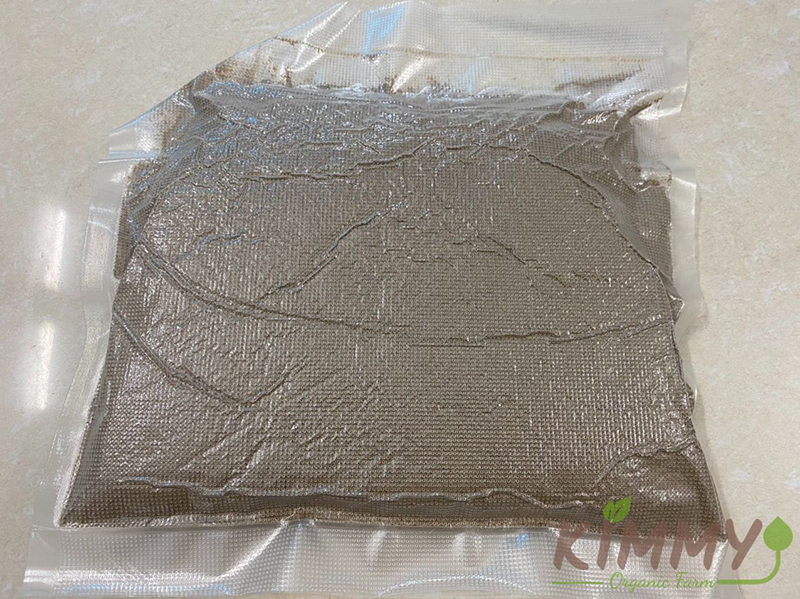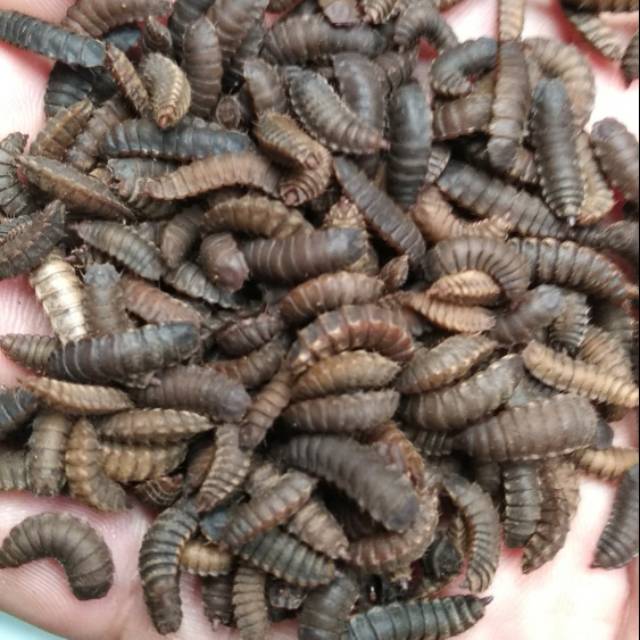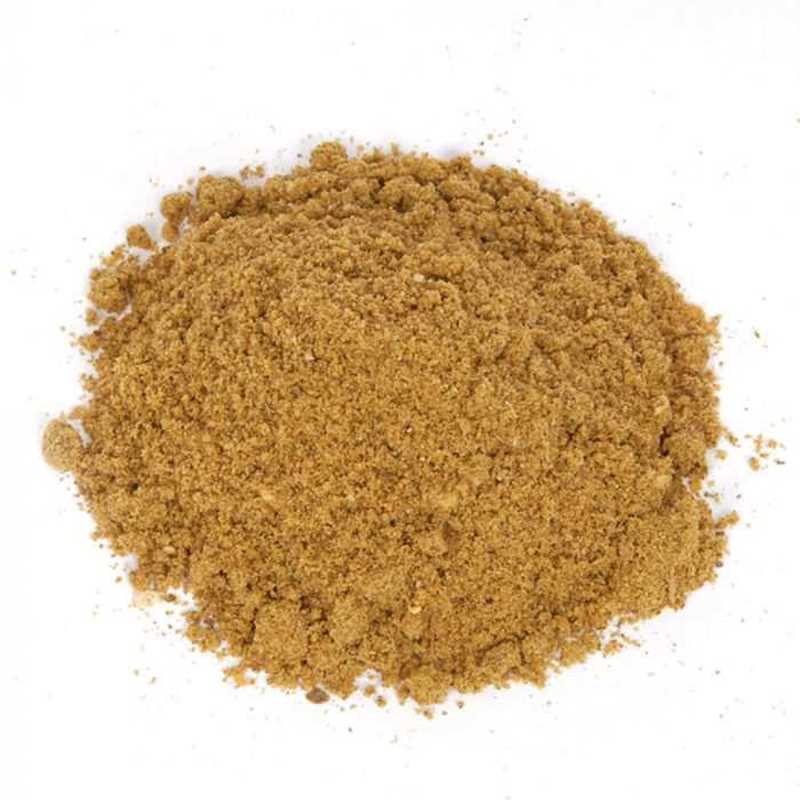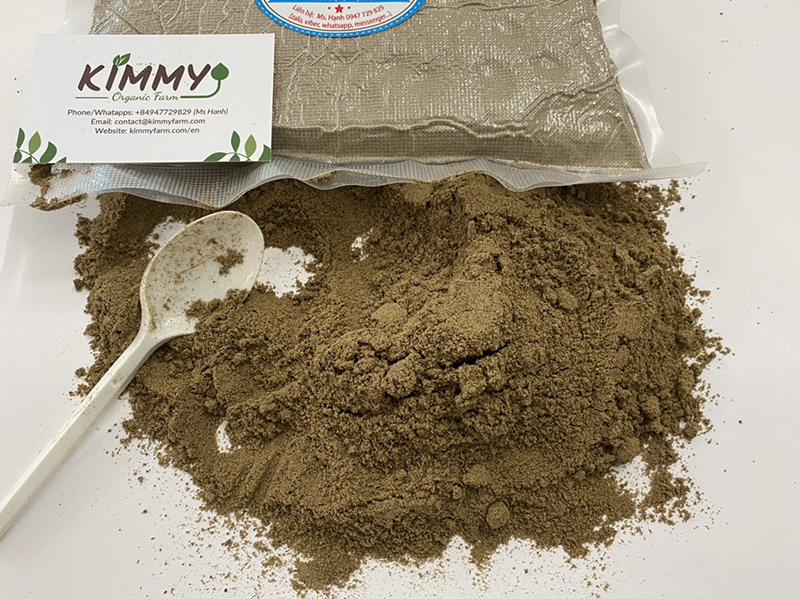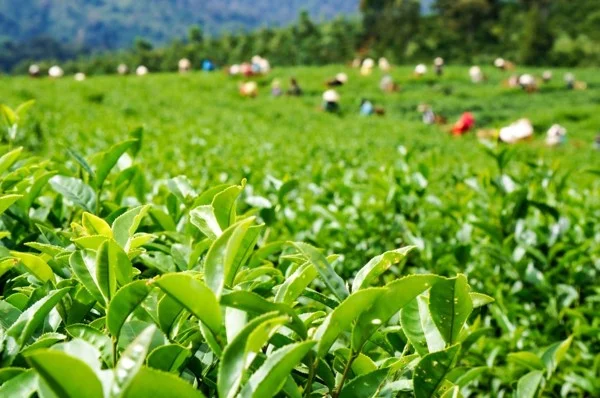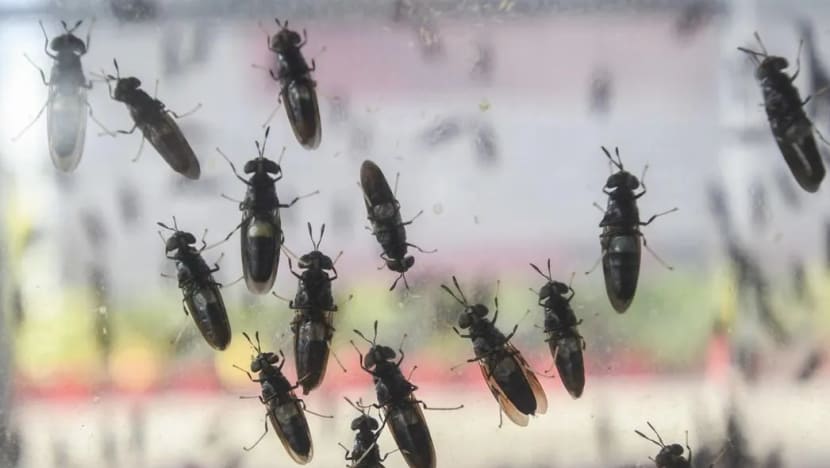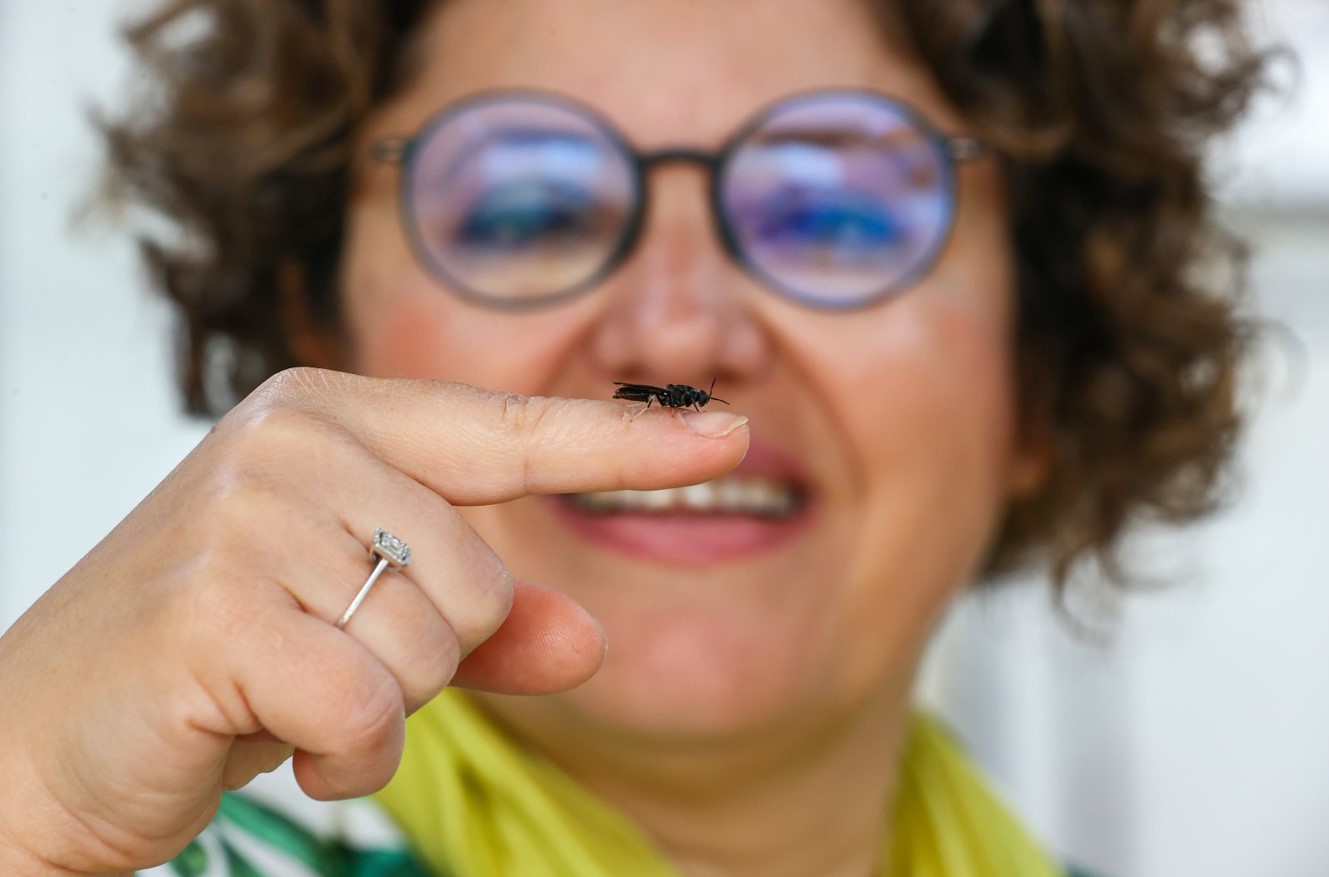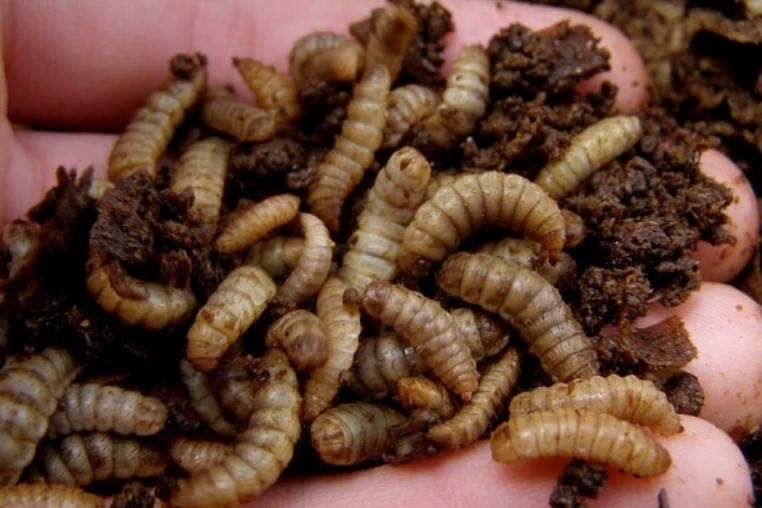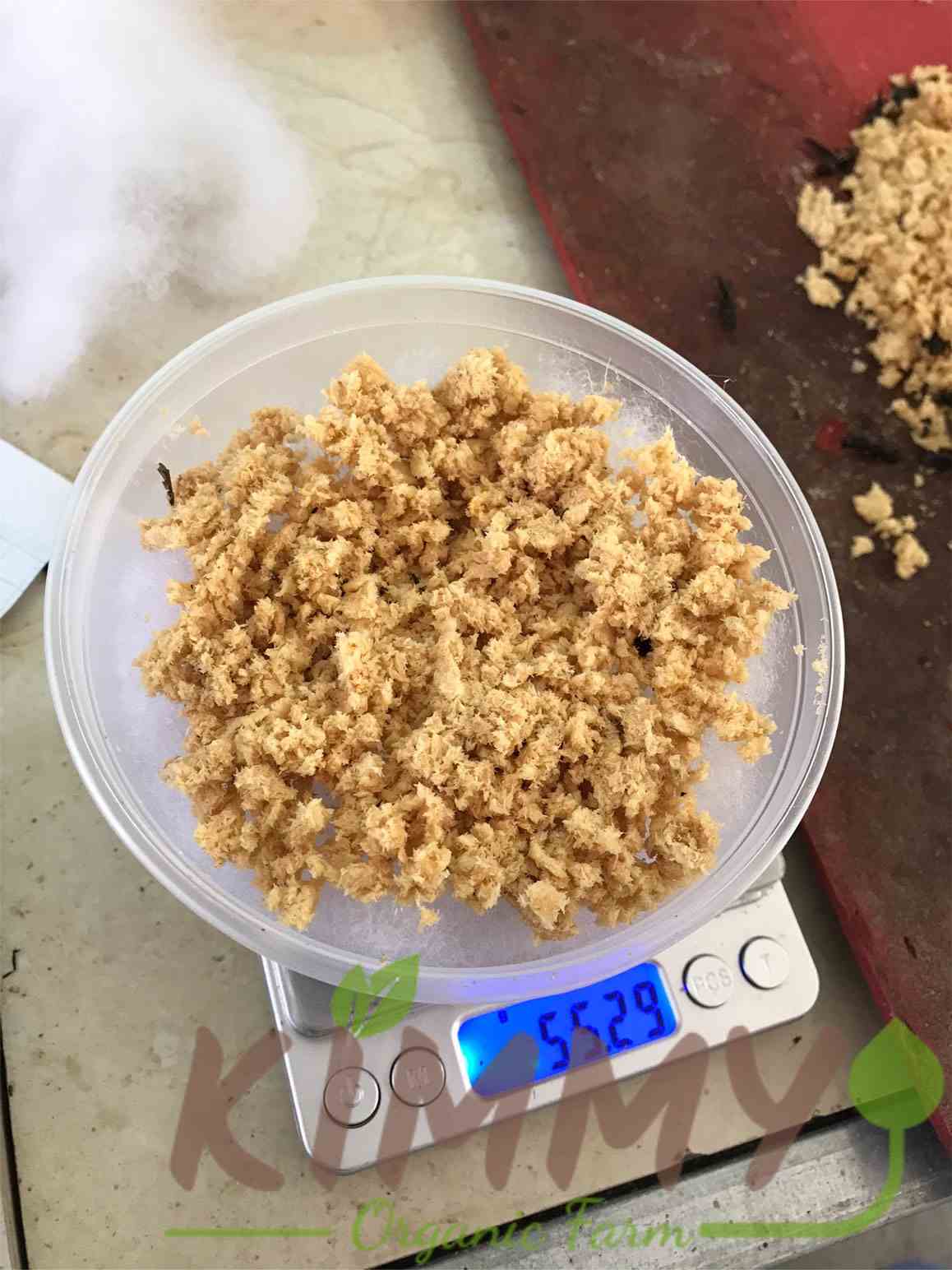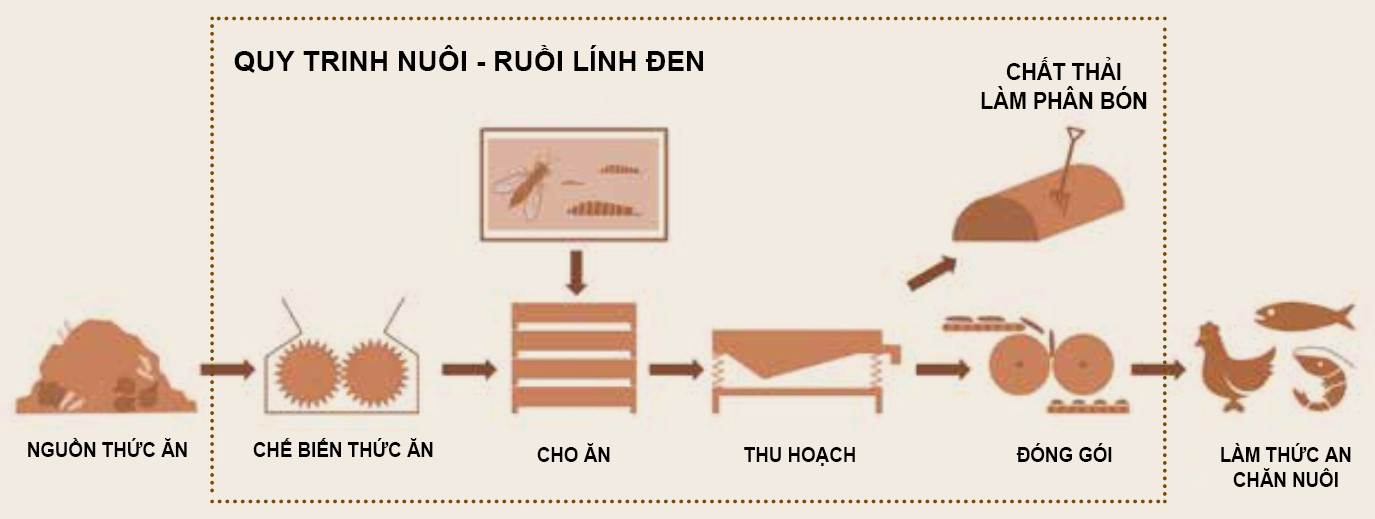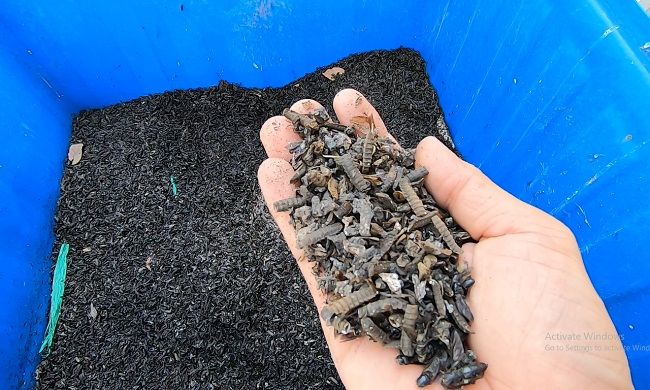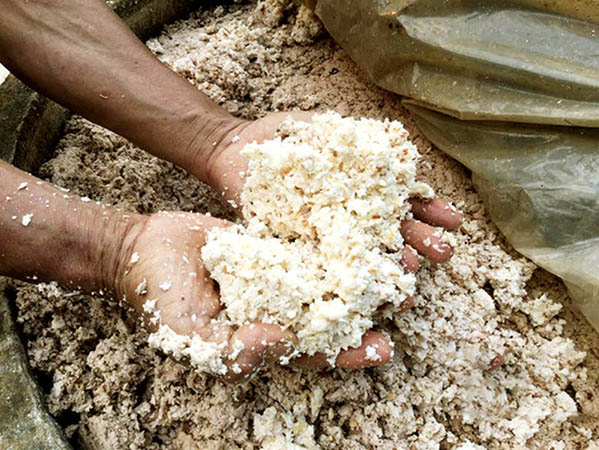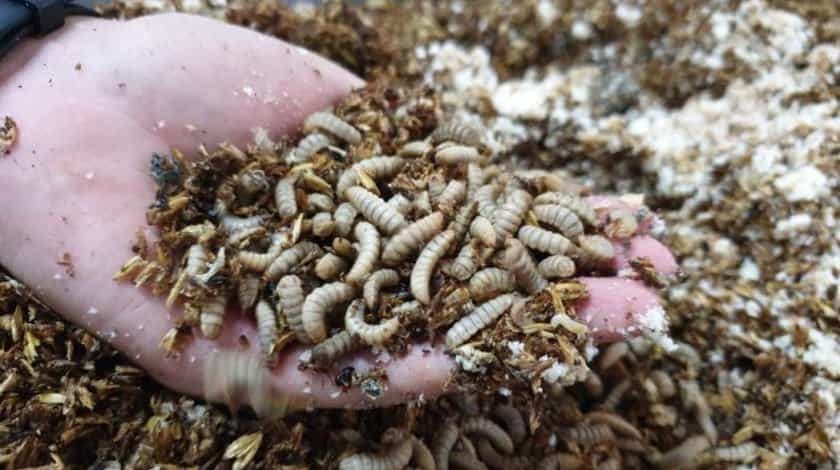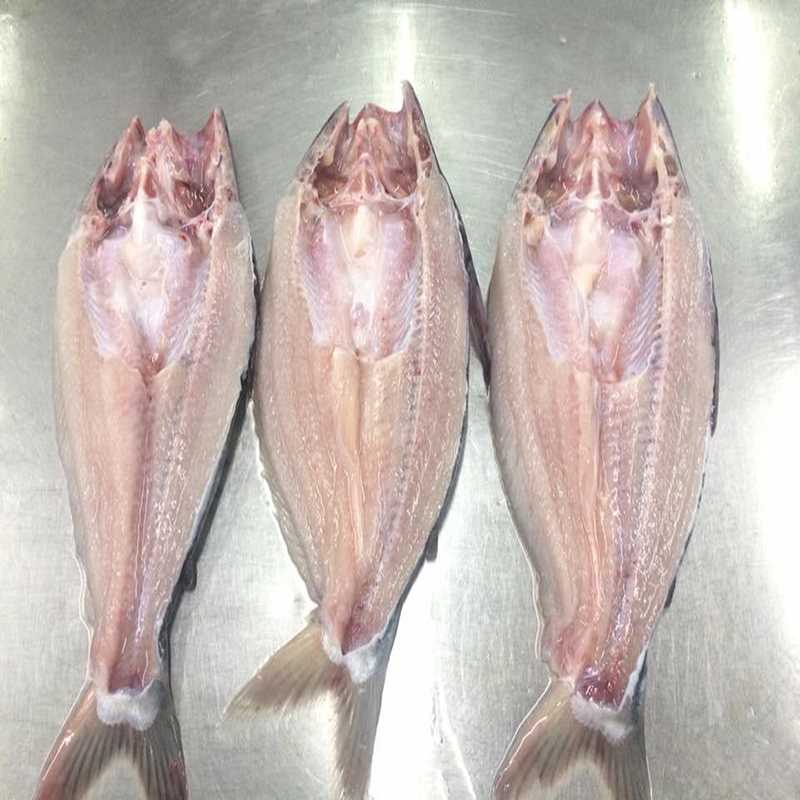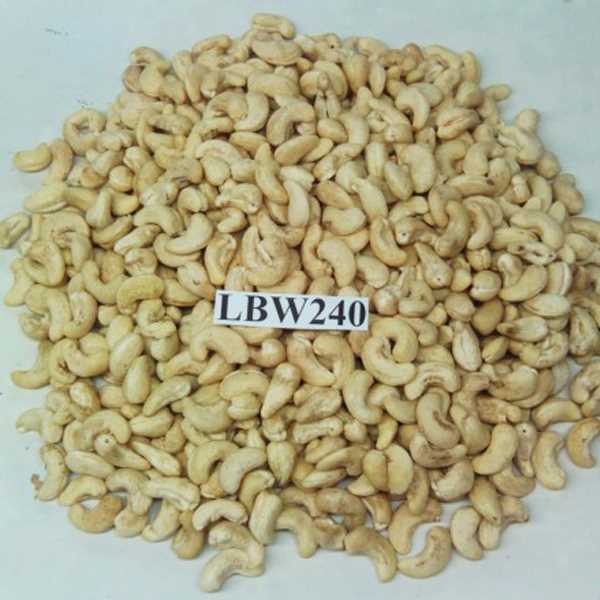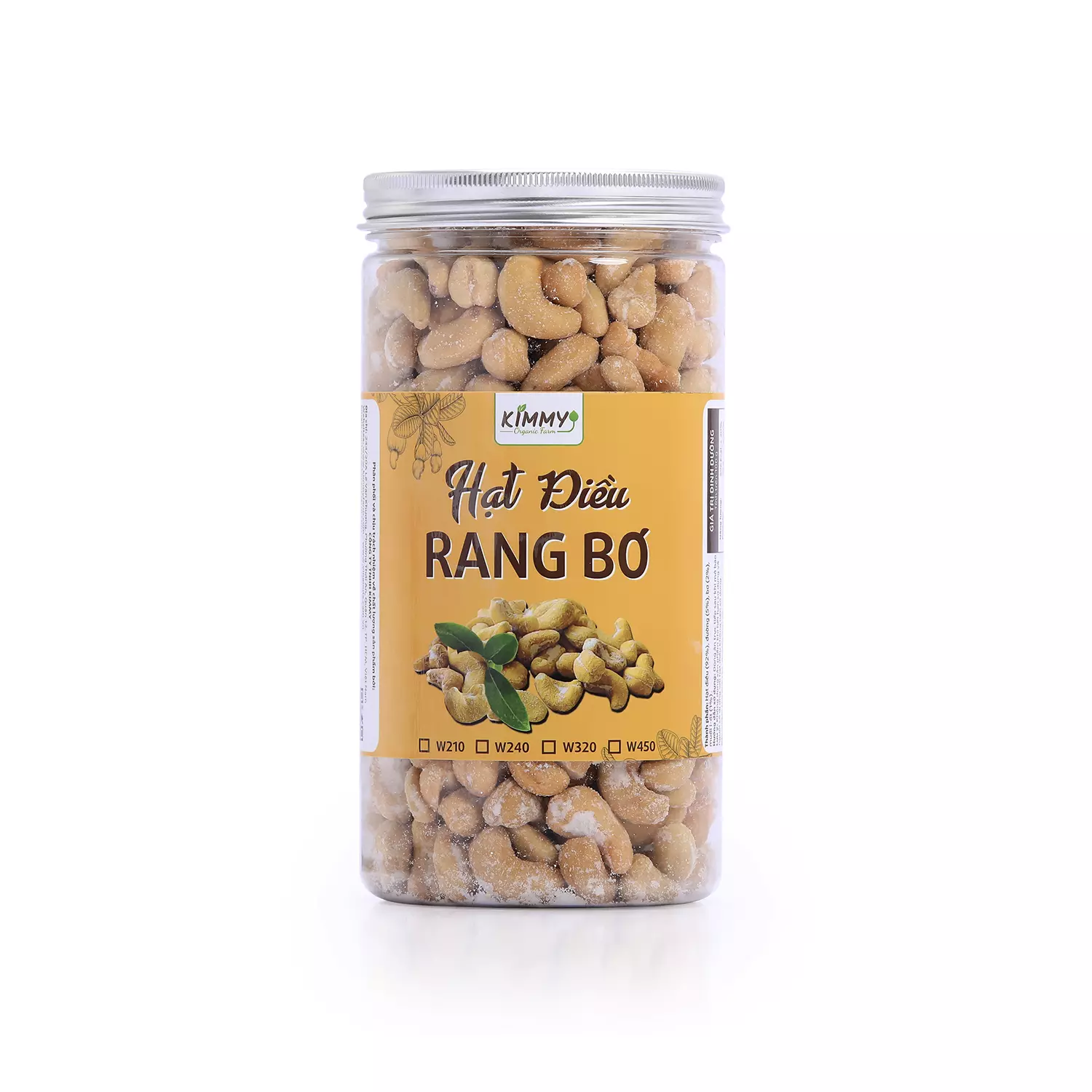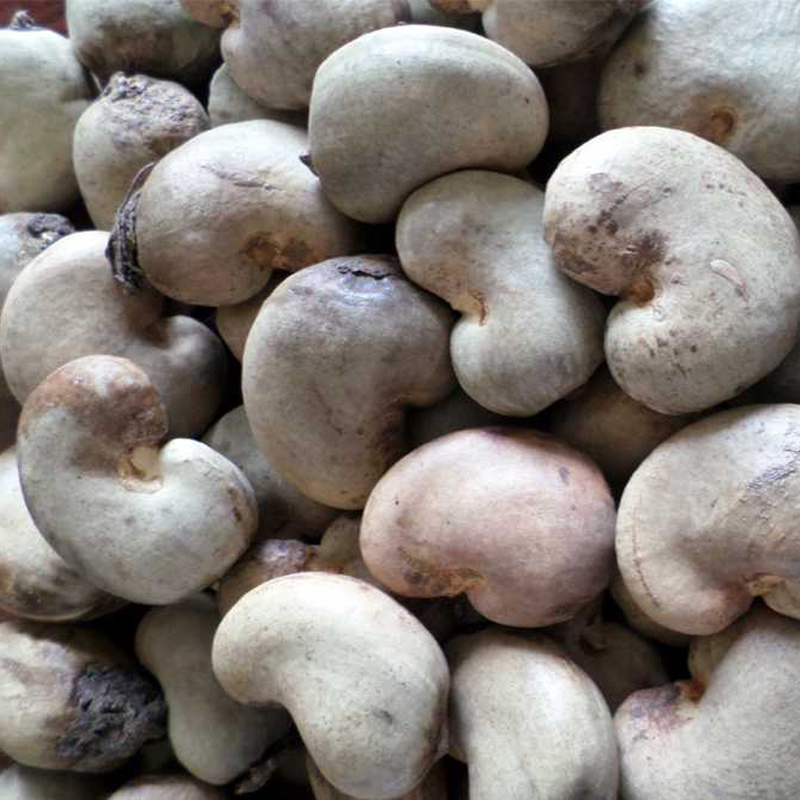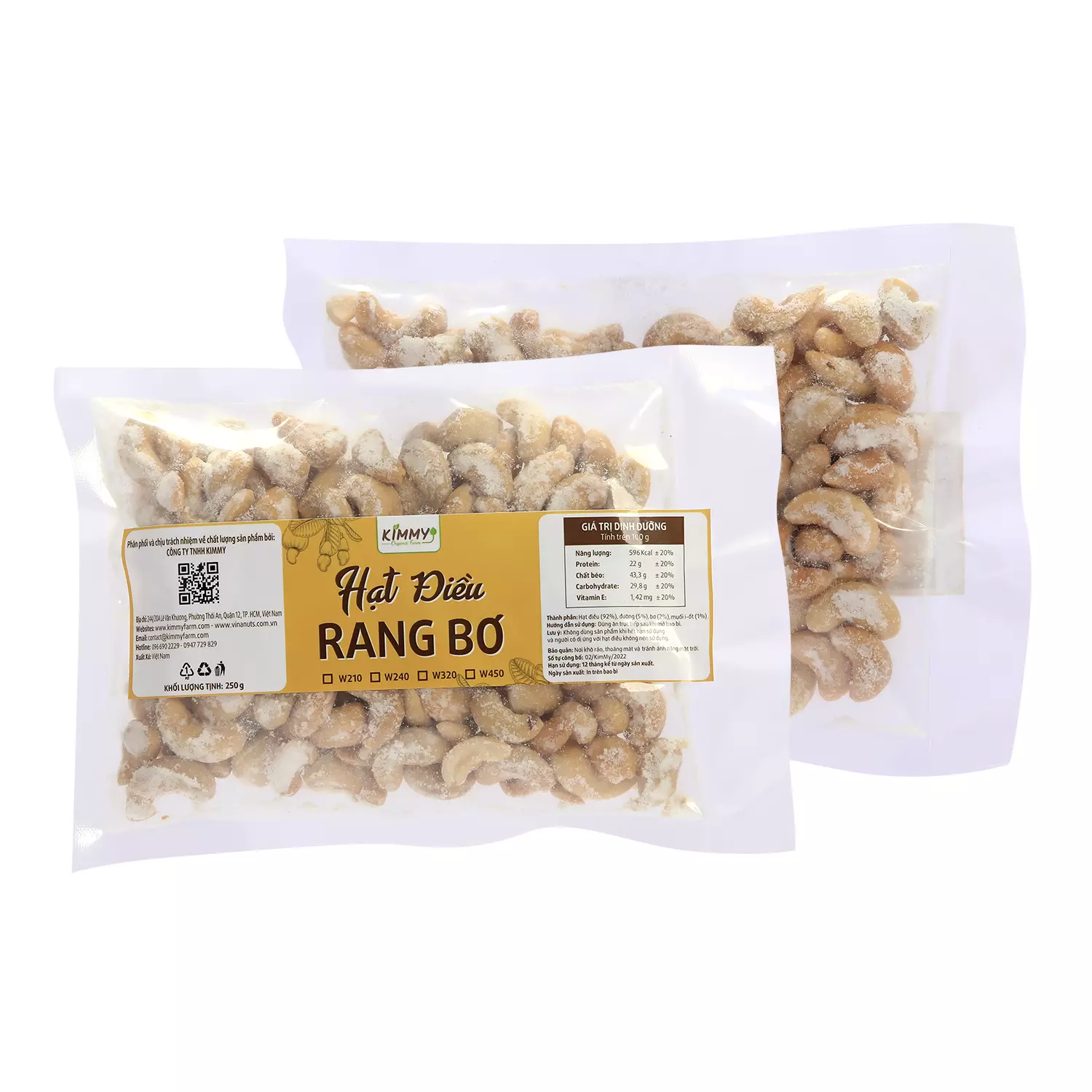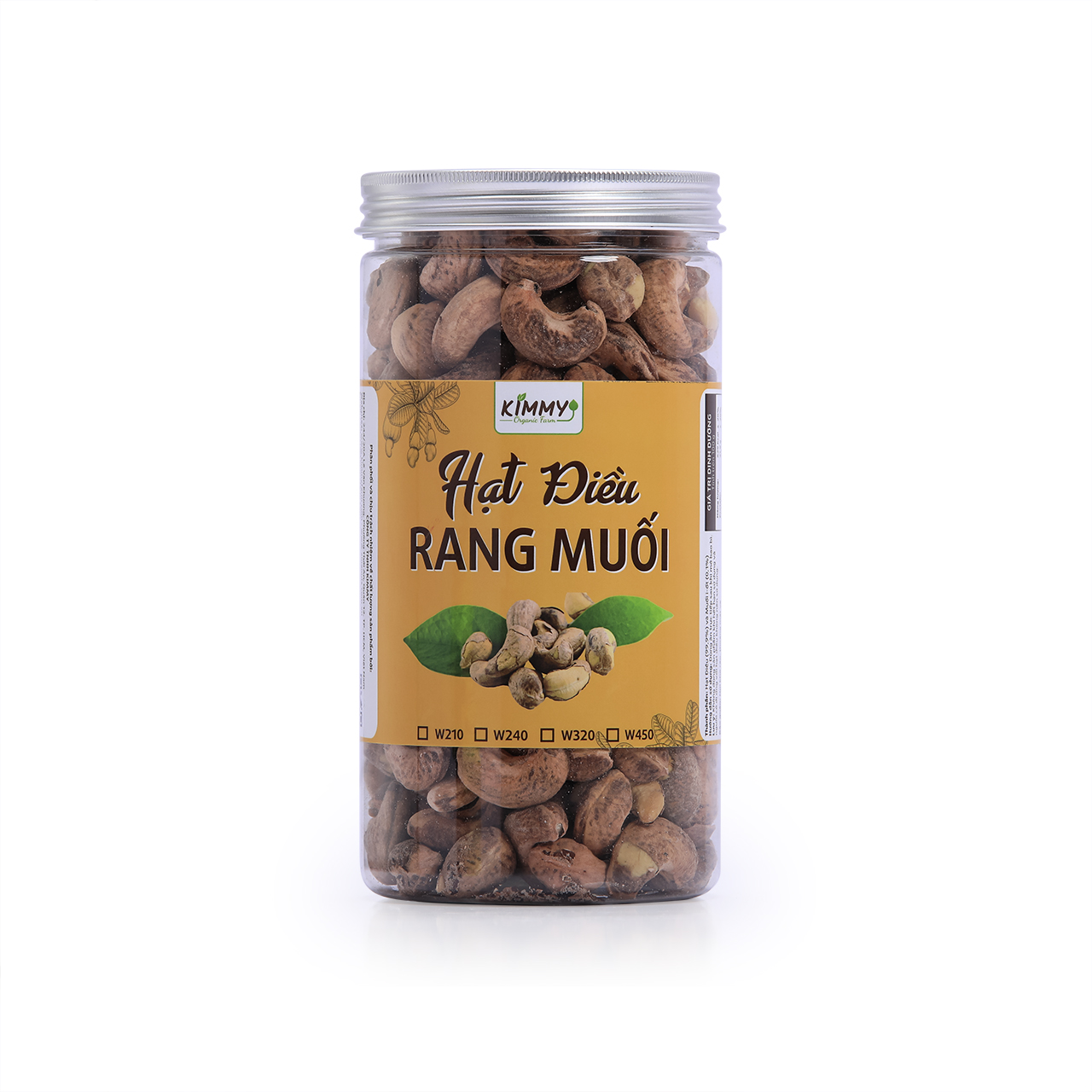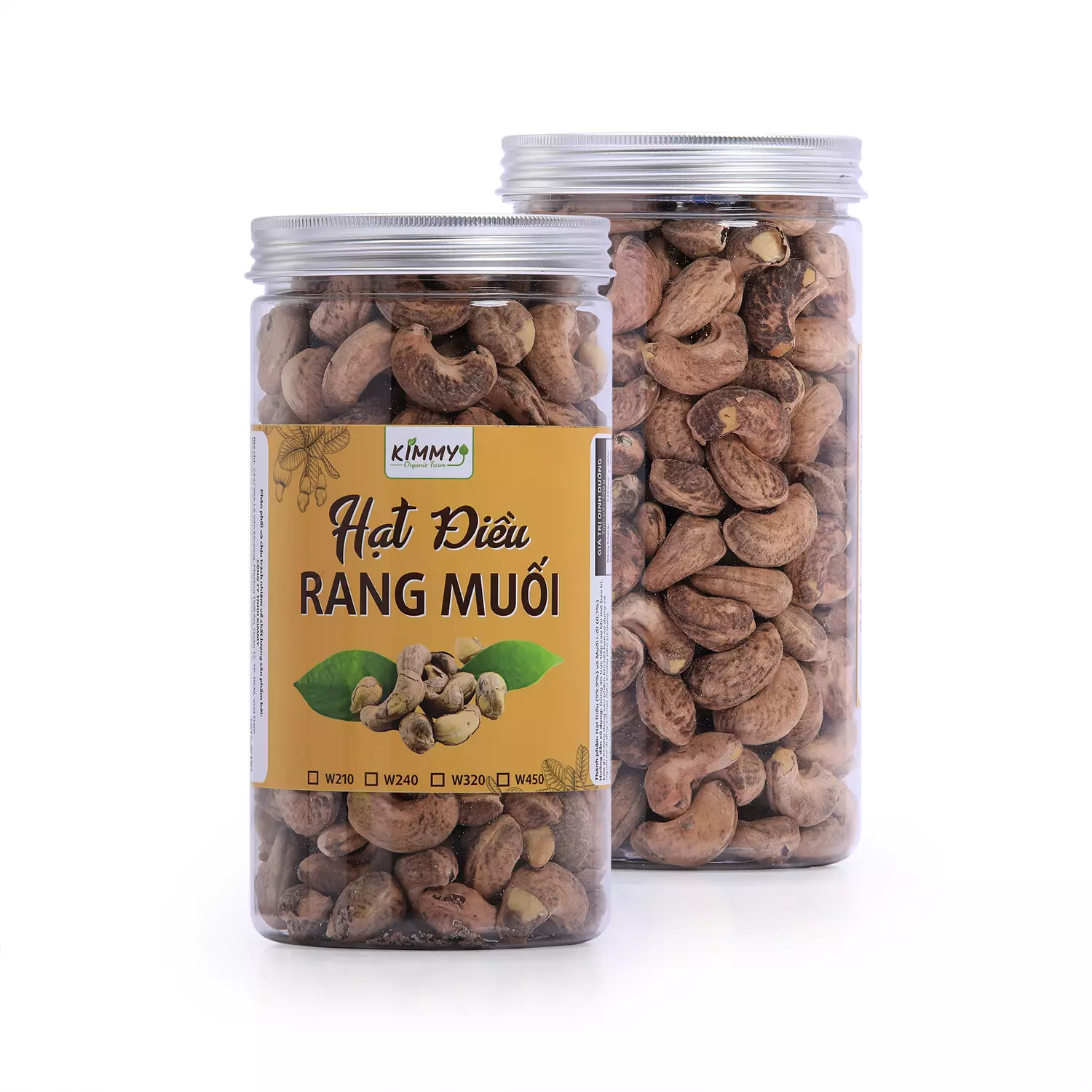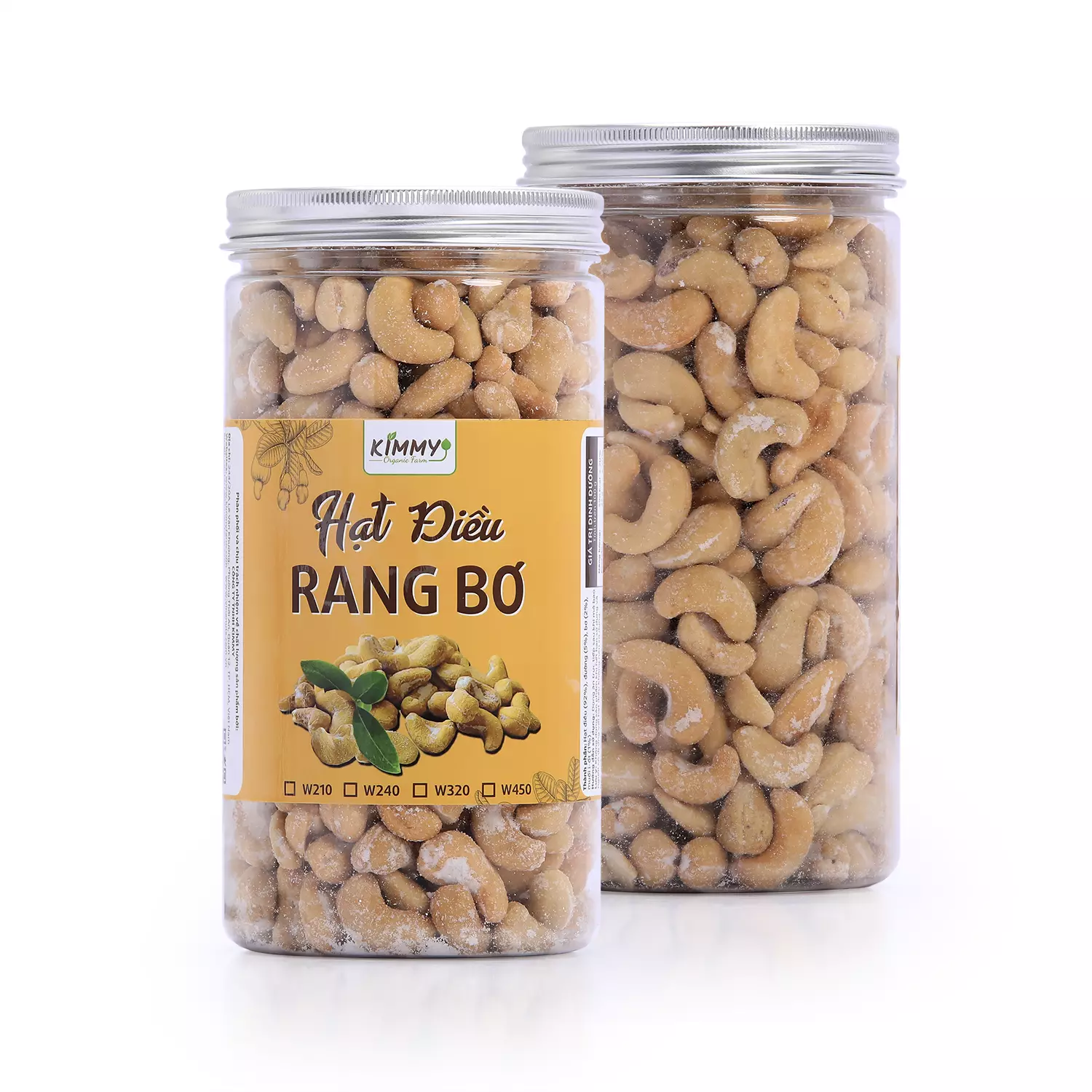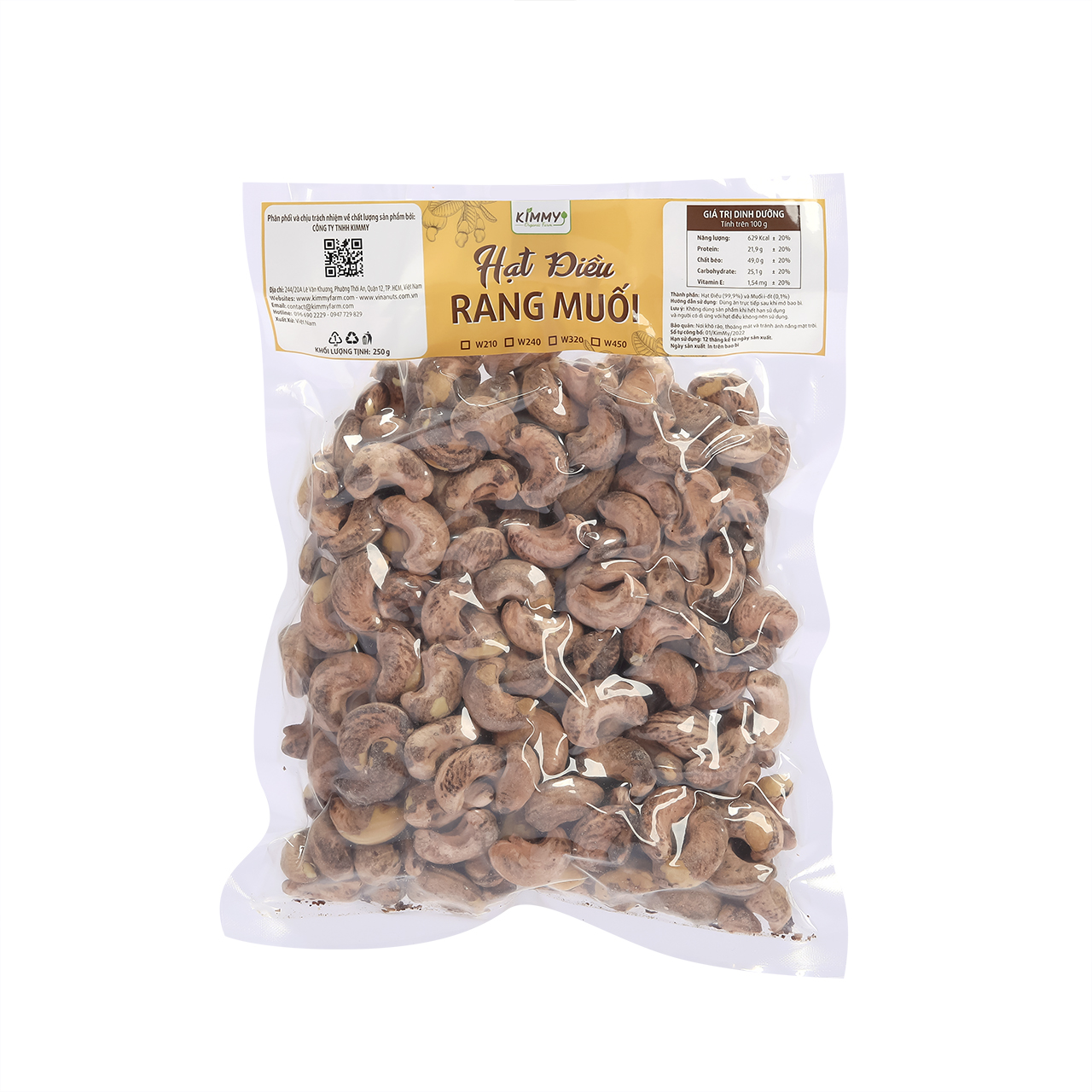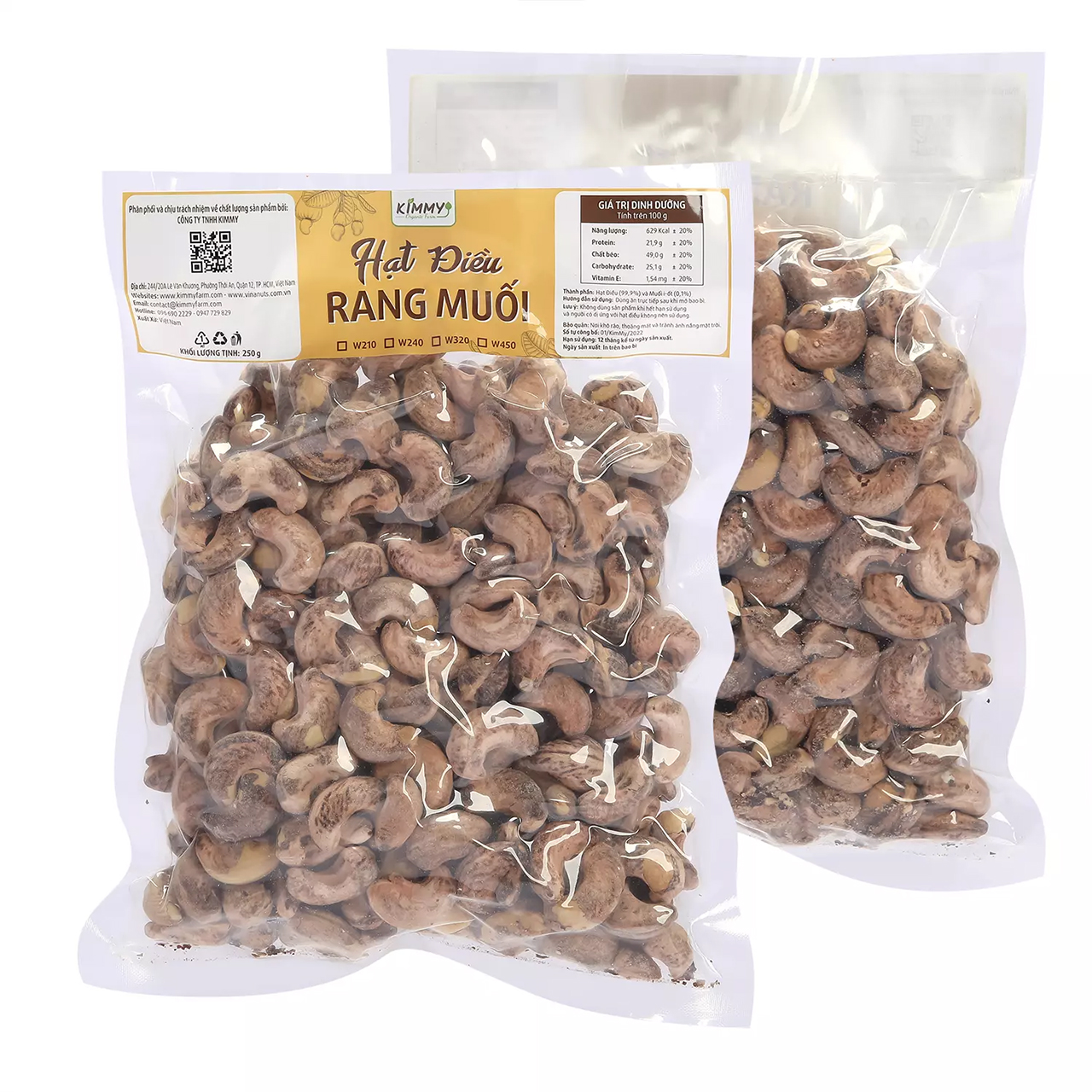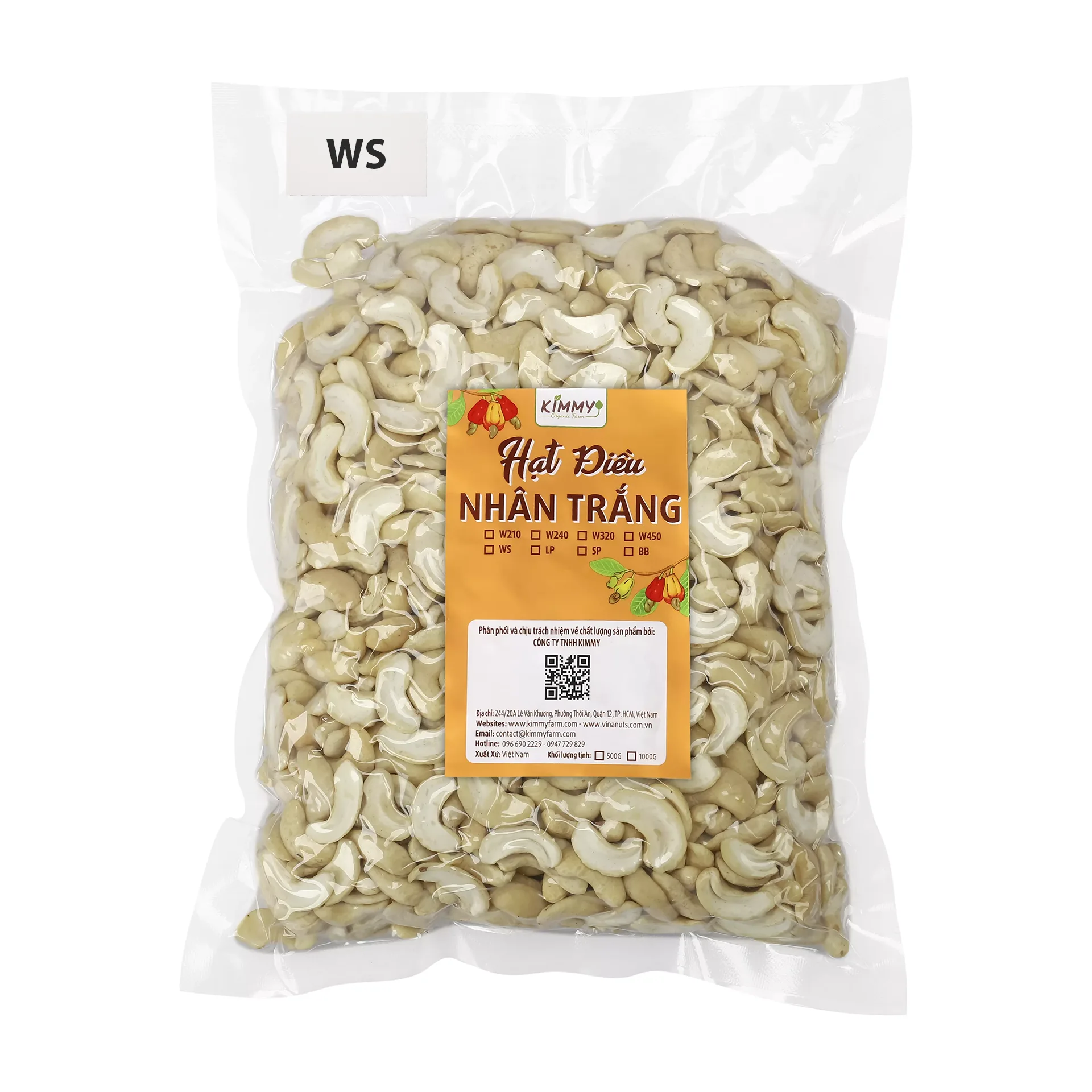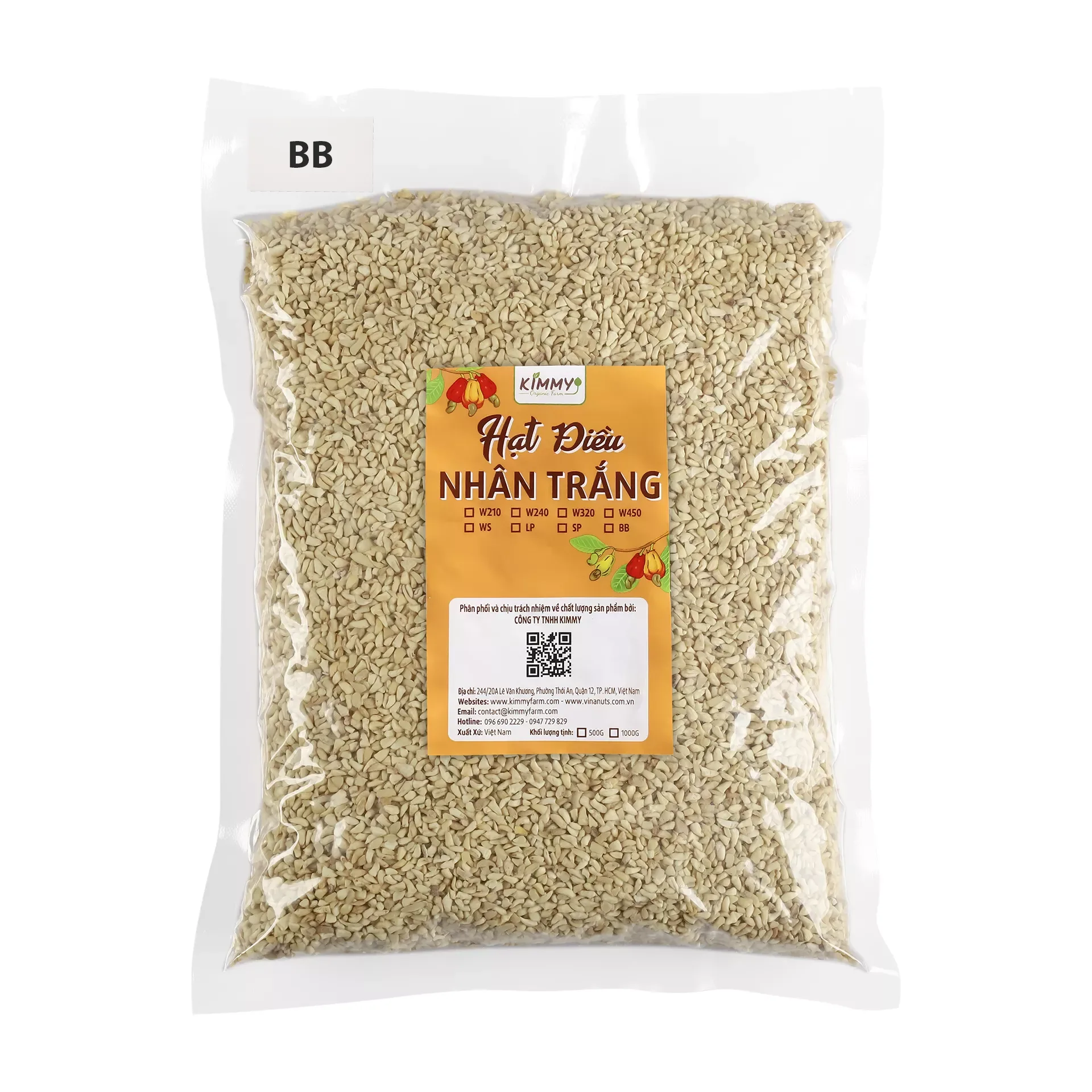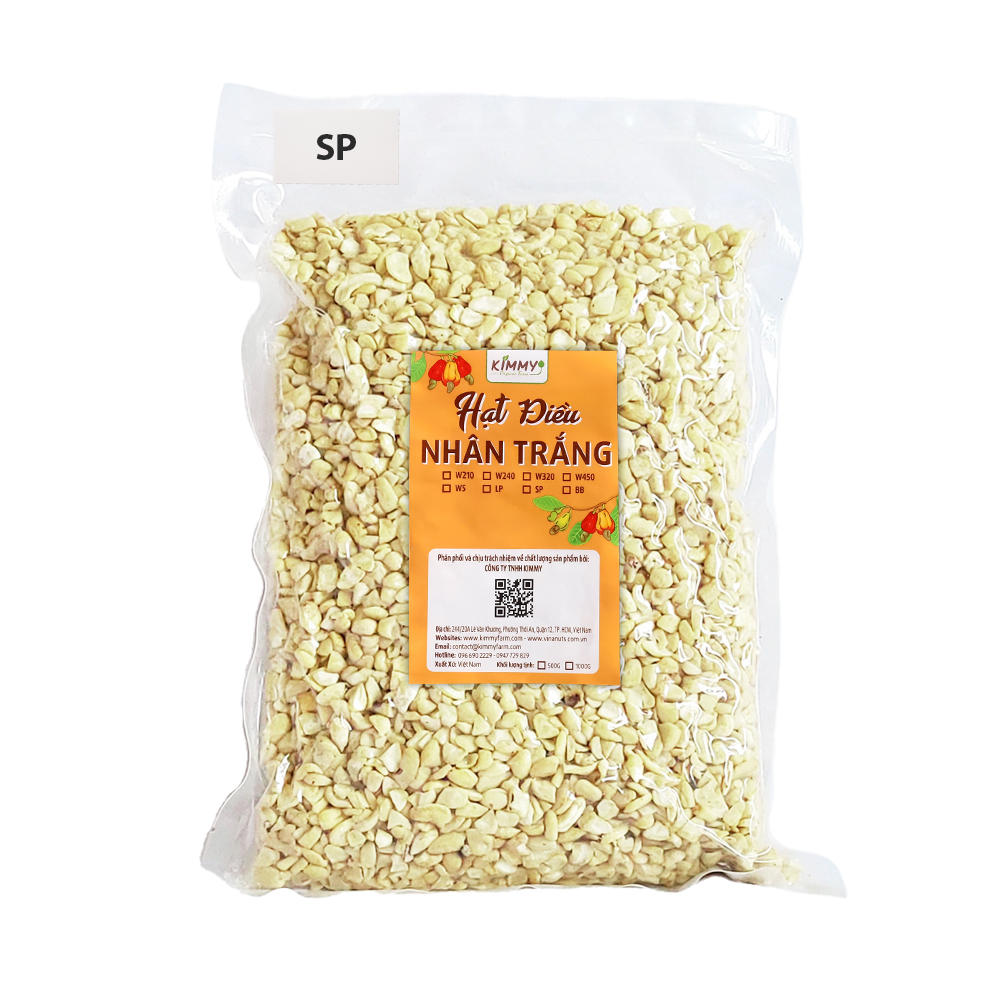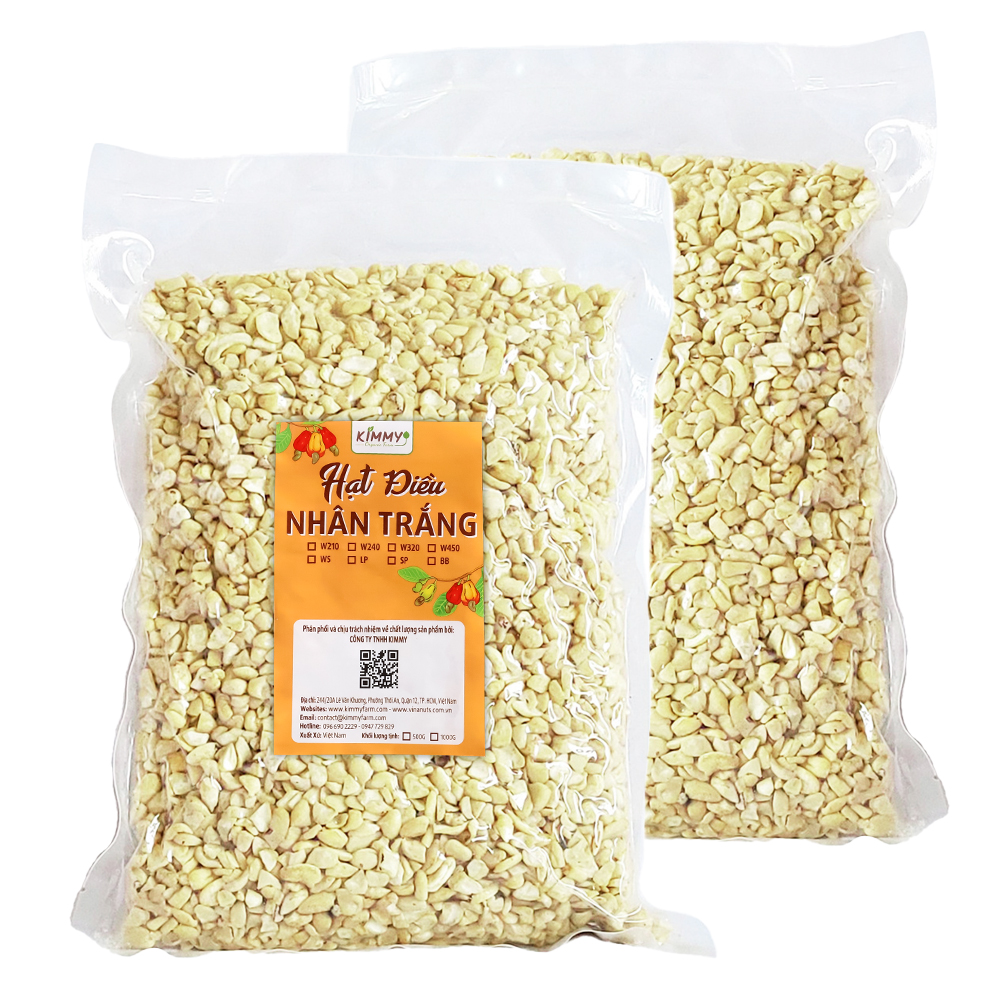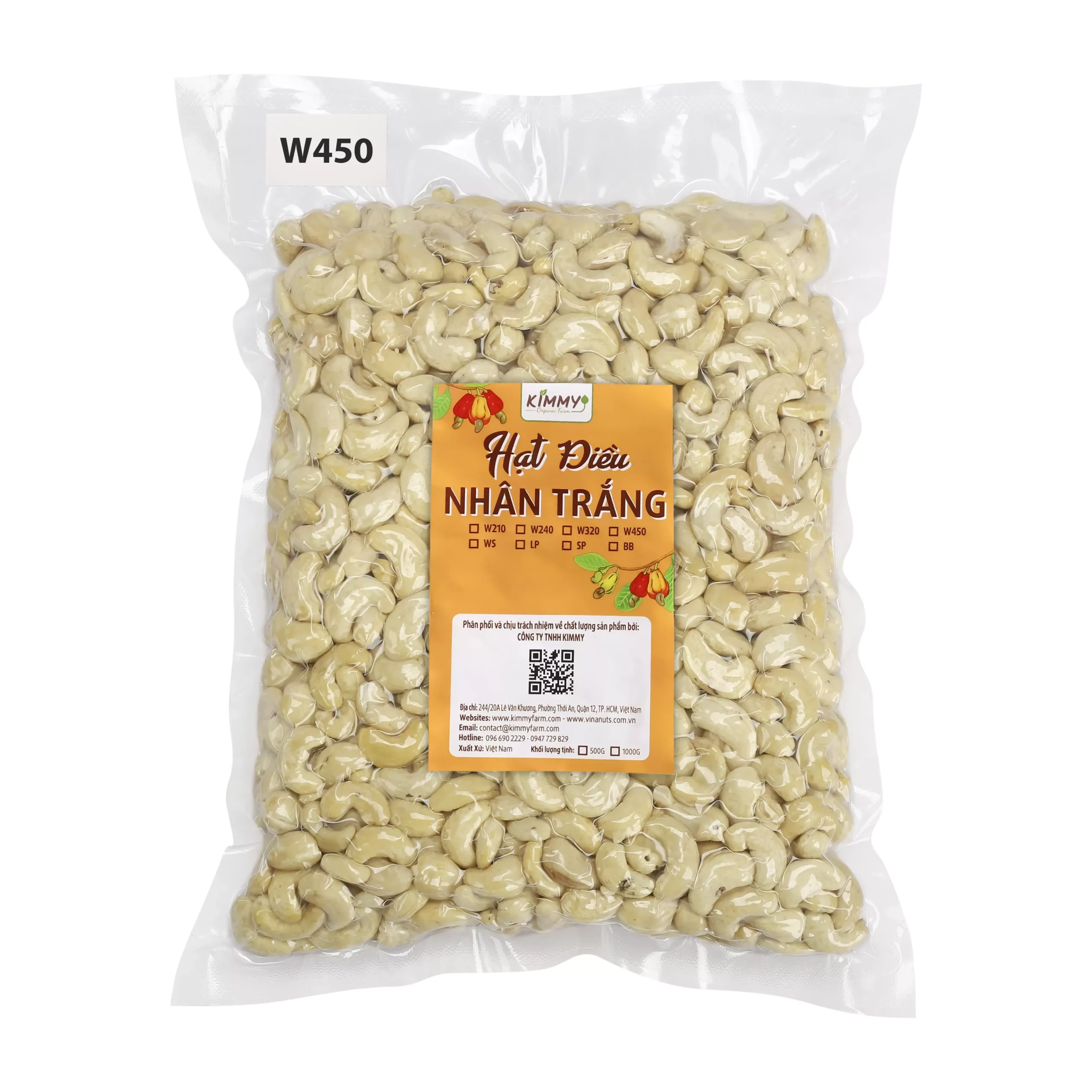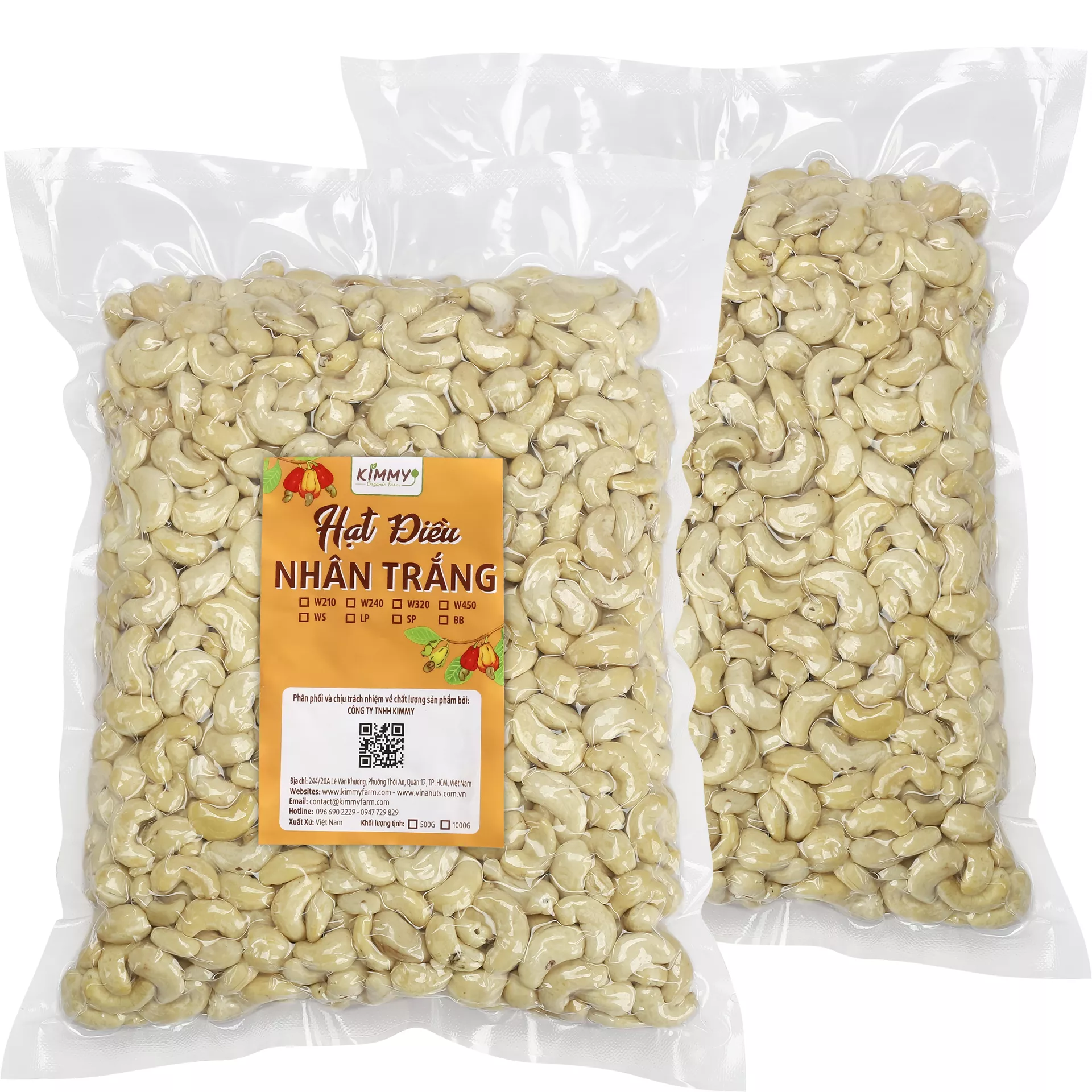Black soldier flies are a great food source for other animals, and these insects can be easily raised on farms. Black soldier flies do not bite or sting and can be used to produce organic fertilizer and animal feed. BSF Farming? Are you researching BSF? Do you want to BSF larvae farming? What are the best conditions for raising black soldier fly larvae? Are you looking for the ideal conditions for the larvae to grow? You are having a lot of questions about how to raise the BSF larvae effectively and which conditions to help the larvae develop well? The equipment needed to set up a black soldier fly farm is minimal. You can set up a black soldier fly farm inside or outside of your home. The BSFL will also need a water source, food, and a container for their eggs. The black soldier fly farm can be set up on any surface, including tables or the floor. Usually, the environmental conditions and optimal food sources for BSF larvae are basically as follows: Climate & temperature, habitat, water content in the feed, required nutrients, feed size… So in order to be able to raise healthy BSF larvae, please pay attention to the conditions mentioned above. Kimmy’s Farm will explain details of each condition in this article.
5 basic conditions for BSF Larvae Farming:
Greetings, fellow entomophagist! Establishing a thriving black soldier fly larvae farm requires meticulous attention to detail and careful consideration of each condition necessary for optimal growth and development. When setting up your farm, it is crucial to ensure that you are providing the ideal environment for the larvae to flourish. In this post, we will discuss the 5 essential conditions that you need to create to successfully cultivate black soldier fly larvae.
- The right climate & temperature.
- Suitable living environment.
- The water content of the food is appropriate.
- Required nutrients in the right food.
- Suitable feed size.
If you want to set up your own black soldier fly farm, there are 5 things that you need to consider.
Climate & Temperature
You can’t raise black soldier fly larvae without first knowing the living temperature. Adequate climate and temperature are important prerequisites for the safe and healthy development of BSF larvae. Many studies have shown Black Soldier Fly Larvae will Grow at the ideal temperature between 24 and 30 ° C for BSF larvae. If it is too hot, the BSF larvae will stop eating and crawl out of the food to look for a cooler spot to stay alive. If it is too cold, their metabolism will be turned back, the larvae will eat less, making them grow and develop slower than normal. For successful black soldier fly larvae farming, it is crucial to maintain the ideal temperature conditions. The table below outlines the optimum temperature requirements for black soldier fly larvae:
| Development Stage | Temperature Range (°C) |
|---|---|
| Egg stage | 24-30 |
| Larval stage | 24-35 |
| Pupal stage | 20-30 |
The summary of suitable climate and temperature for fly larvae is from 24 – 30 ° C. In which:
- If it is too hot, the black soldier fly larvae will stop eating and crawl away.
- If it is too cold, the BSFL will be less developed and slow to grow.
- BFS will slowly hatch if it is too cold.
- Black soldier fly eggs will die if too hot.
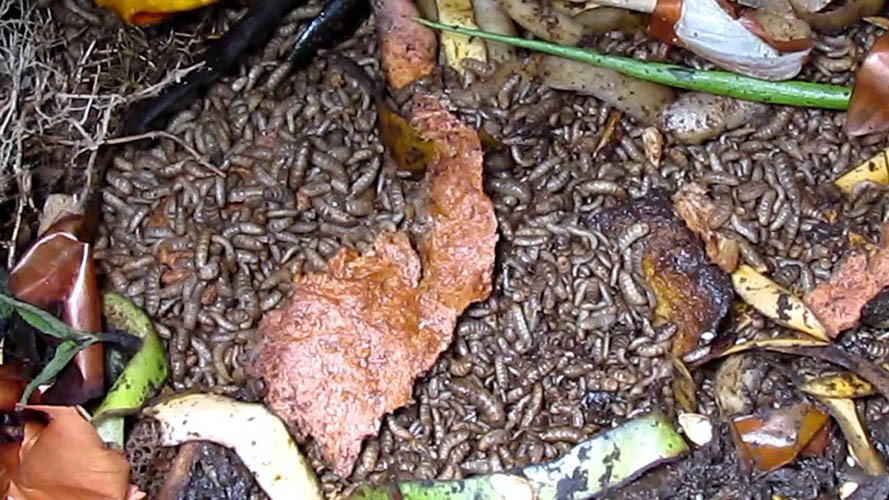
Black soldier fly larvae are suitable in places with a Wet & Cool climate, with a temperature of 24 – 30 degrees Celsius.
Maintaining the optimum temperature range is crucial for the successful farming of black soldier fly larvae. By understanding the thermal preferences and effects of extreme temperatures, you can ensure a healthy and thriving farm.
Living Environment
In the larval stage, BSF larvae are a type that prefers shade and is averse to intense sun. In a natural environment, the larvae will tend to stay away from light and search for cool and humid places to live in. So if Black Soldier fly larvae food is exposed to direct sunlight, they will tend to move deeper into the food layer to escape the sunlight. Since the outer surface of these larvae is so weak they are easily dehydrated, and dehydration will greatly affect their vitality.
Suitable habitat environments for BSF larvae is:
- A shade away from direct sunlight.
- Cool, a humid place with moderate temperature.
- Avoid air pollution.
- Avoid noise pollution.
- Avoid pesticide contamination.
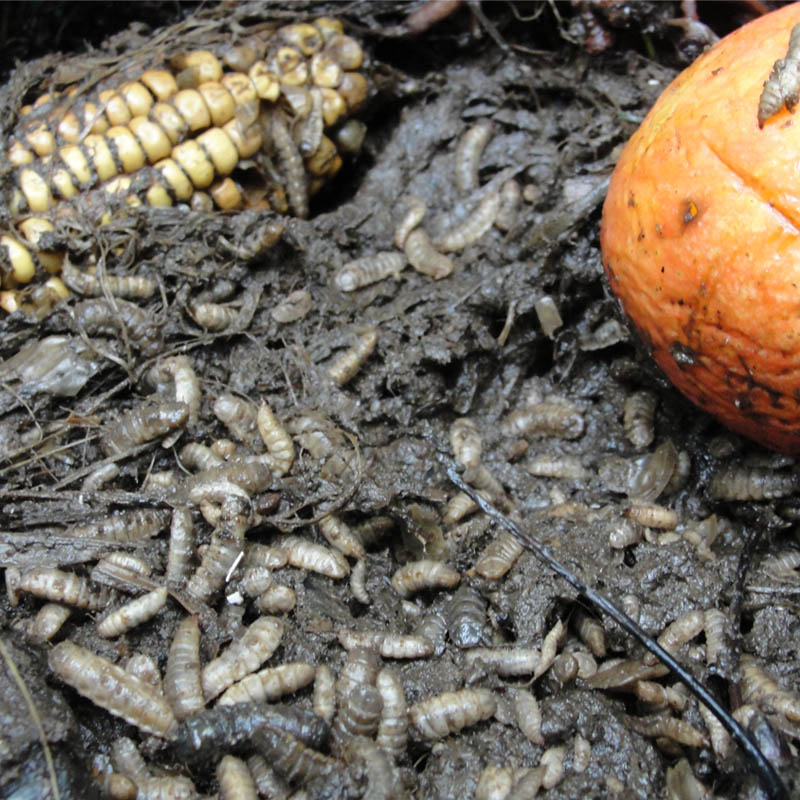
The suitable environment for black soldier fly larvae to grow is a shady, humid, and cool place.
Appropriate Water Content of Food
In the natural environment, BSF larvae live in a high moisture environment, so they often go to places where food sources are rotting to eat. Here the decomposing mucus of foods, organic matter that looks the rotting phase will be first eaten. So fly larvae farmers need to simulate the environment of the food source that fly larvae love in the wild to help them easily adapt to the artificial environment. Food sources of BSF larvae must be quite wet with a water content of 60% – 90% so that the BSF larvae can easily eat this substance. The digestibility of BSF larvae may be the strongest of any known insect larvae, however, the food source must be sufficiently soft and damp for them to consume. 60% – 90% is the required water content in the diet of BSF larvae to help them easily absorb this food source.
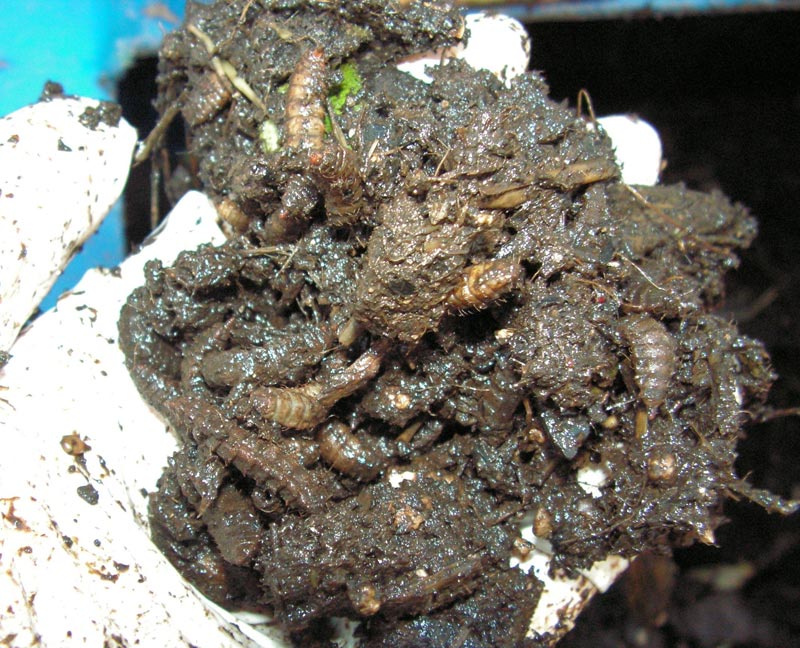
In the natural environment, BSF larvae live in a high moisture environment, so they often go to places where food sources are rotting to eat.
Appropriate Food
A food source must be a rich source of protein and carbohydrates to help the larvae of the BSF thrive. Protein-rich food sources are usually leftover food, poultry manure, and fish intestines from fish processing places … Carbohydrate-rich food sources include: soybean baits, sugar cane baits, molasses, pasta carcasses, sweet potatoes, residual bran… However, be careful of food sources contaminated with pesticides or heavy metals, they will kill your BSF Farm if these contents are too high for your BSF larvae. Make sure your food source is free of pesticides before you feed your BSF larvae to limit their risk of death. The required nutrients in a suitable diet for BSF larvae are: high in protein and rich in carbohydrates.
=> Related Article: 5 Low-Cost BSF Larvae Feed Options To Grow Your BSF Farm
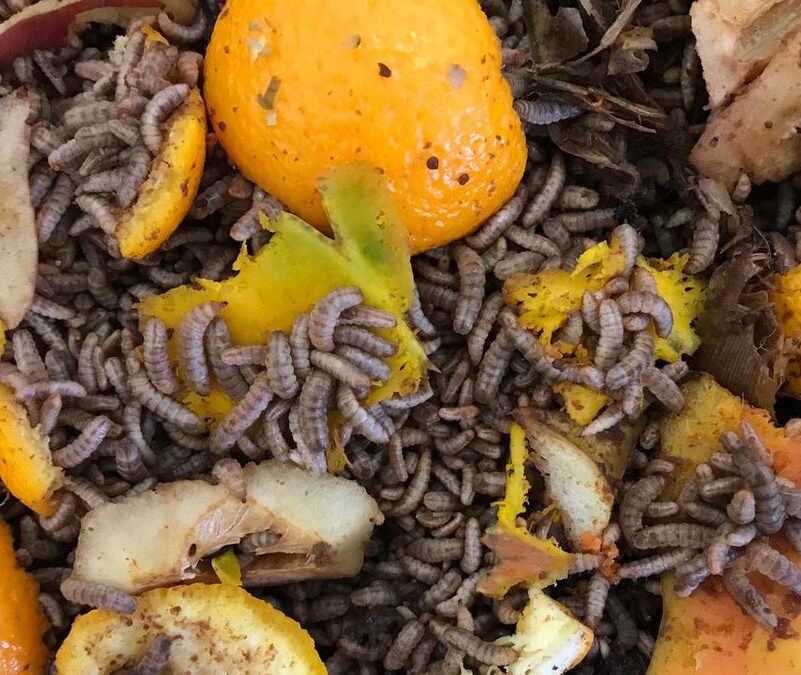
Make sure your food source is free of pesticides before you feed your BSF larvae to limit their risk of death
Suitable feed particle size
BSF larvae are quite small in size and they do not have a mouth to chew food. Therefore the size of the food particles of BSF larvae should be ensured to be very small, preferably in liquid or pasty form, so that they can easily access the food source as easily as possible. Proper feed particle size is very important, they will greatly affect the survival and development of fly larvae. The digestibility of BSF larvae is the strongest insect larvae in the wild, however, the food source must be small enough, soft, and moist enough for them to be consumed. Because understanding the appropriate feed particle sizes for larvae will help the BSF larvae absorb more efficiently, helping you save a lot of money in finding food for your larvae farm. Appropriate grain size should be very small, as small as possible. The best food sources are liquid or pasty, so they are easily accessible. In addition, the food for fly larvae should not be too thick inside the feeding hole (about 4 to 5 cm is okay), so that they can eat all the food we provide to avoid waste.
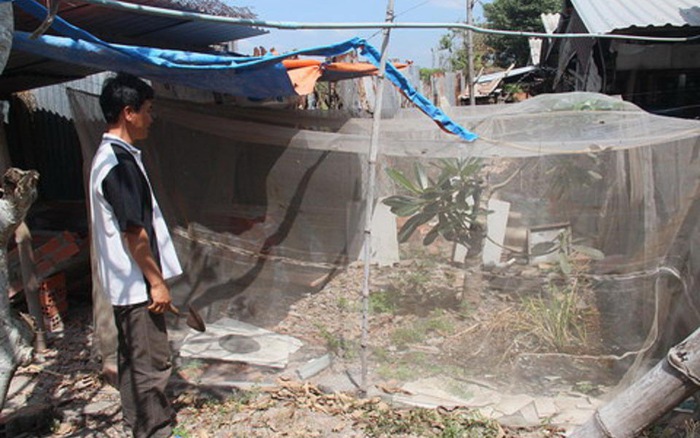
The BSF Farm In Binh Phuoc Vietnam
Answer Questions About The Larvae
Question: I’m raising BSF larvae on my farm. Last week, I saw many of my BSF larvae dying. Can you share your own farming experience? What advice can you give me?
Answer question:
- A. If your BSF larvae are not moving but have formed a dark crust / pupal stage (pre-pupa), then it is their natural cycle and they are still alive but they don’t move anymore.
- B. If your BSF larvae are creamy-colored but are not moving, they are likely dead or have gone into hibernation. These larvae go into hibernation when the ambient temperature drops below 15 Celcius degrees in a low-light environment.
- C. However you do not have to worry too much. Although the fly larvae may not wiggle a lot or eat less, they are still alive. BSF larvae are the most powerful in the insect world, they will not die without enough food and only lose weight. The only temperatures that can kill BSF larvae are when they get too hot above 43 Celcius degrees, or when they get too cold below -6 Celsius degrees.
If the larvae are slowly dying, you can check for these 3 basic conditions:
- Density: if the larval density in the larval rearing tank is too high, it could lead to death because of a high-temperature problem.
- Airflow: ensure good air circulation for larvae to breathe. Make sure no one is using high-dose pesticides around.
- Food Sources: Certain raw food sources like brewing cereals can create a fairly hot environment and contain some alcohol. Be mindful of the chemical and pesticide residues in some of the fruits and vegetables you feed the larvae. Excessive pesticide residues will kill your entire black soldier fly larvae farm.
KIMMY farm – specializes in providing products related to BSF such as BSF eggs, BSF larvae, BSF pupae, BSFL oil, BSL Meal… We have a black soldier fly farm at the clean agricultural farming area in Binh Phuoc and a representative office for your convenience in HCMC. We are a clean and modern agricultural farm with the desire to share the best with many people and develop the clean agricultural ecosystem of Vietnam. Please contact us if you need a supplier for Black Soldier Fly.
Our Contact Infomation:
- Phone/Zalo: 0947729829 (Ms. Hanh)
- Whatapps/Viber: +84947729829 (English & VN) Email: contact@kimmyfarm.com
- BFS Farm: Ben Kinh Hamlet, Don Thuan Commune, Bau Bang District, Tay Ninh Province, Vietnam
- BFS Farm & Cashew Growing Area: Nghia Binh Commune, Bu Dang District, Binh Phuoc, Vietnam
@Products Mentioned in Article: Black Soldier Fly Products
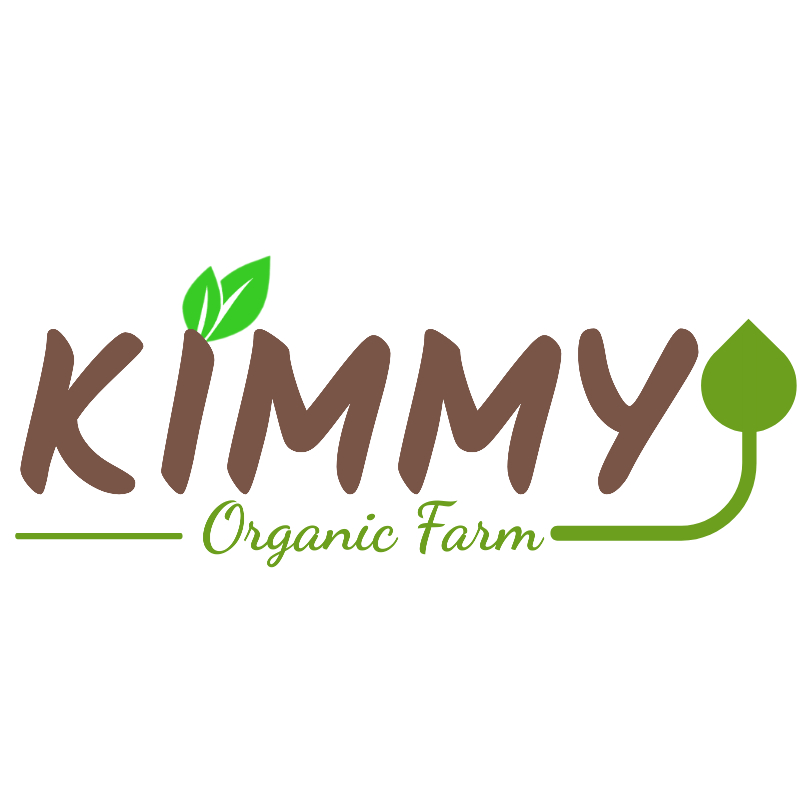
A brand specializing in the production and export of agricultural products in Vietnam. We have a black soldier fly farm in Tay Ninh and a cashew growing area in Binh Phuoc. The main export products of the company are: cashew nuts, cashew nut kernels, black soldier fly, frozen seafood, shrimp, prawns, catfish… from Vietnam.
